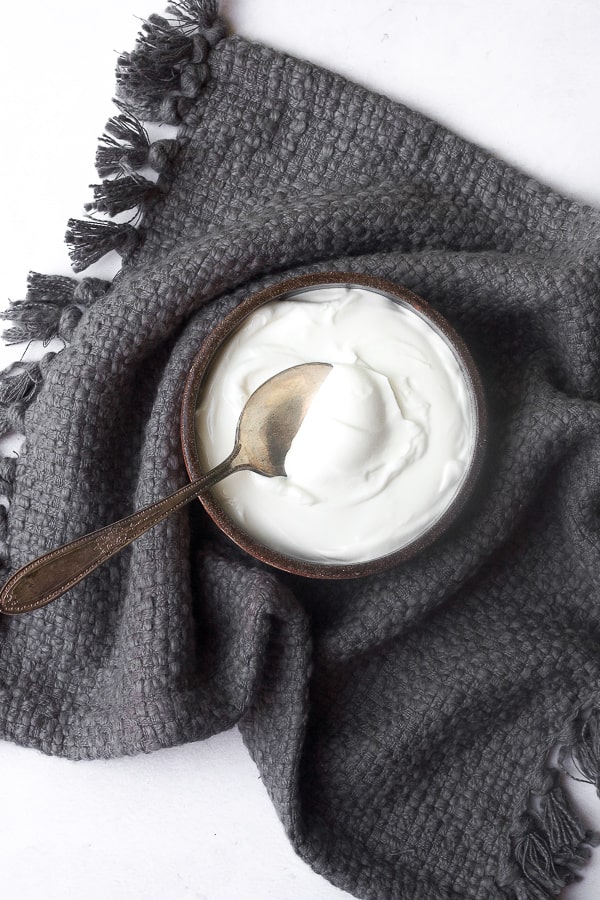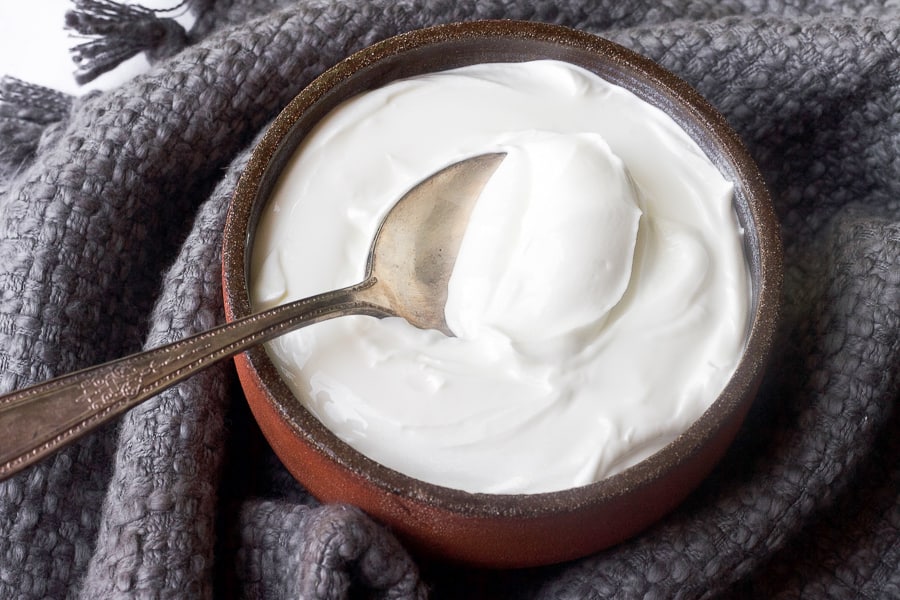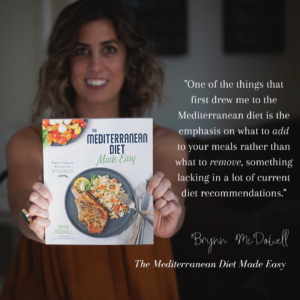Navigating the yogurt aisle at your local grocery store can be overwhelming. Discussing some key areas to look for when choosing a yogurt.
Why Are There So Many Types of Yogurt?
Stroll down the dairy aisle at your local grocery store and you are likely to become overwhelmed at the number of different yogurts available.
This picture is just 1/3 of the yogurt section at my local Safeway.
There are so many different brands of yogurt, flavors, and types. A person can choose between regular, full fat, low fat, non fat, greek, icelandic, french, plant based, low sugar, light, fit, drinkable, squeezable, etc.
Who knew picking out a yogurt could be so confusing!
The Different Types of Yogurt Available

There are so many different types of yogurt available, which also depends on where you live and what store you shop at.
The most common types I find at the store include the following.
Greek Yogurt
When yogurt is made, it goes through a curdling process, which produces a liquid called whey. Greek yogurt is strained of additional whey, making it thicker and creamier in texture than regular yogurt.
Greek Yogurt tends to have more protein than regular yogurt and less sugar. However, regular yogurt tends to have more calcium when compared to most greek yogurt brands. Brands like Fage and Oikos are examples of Greek yogurt.
French Yogurt
Typically served in individual glass pots, french yogurt is thick and creamy. It’s usually full fat but contains less protein than greek yogurt. A popular example is Oui by Yoplait.
Icelandic Yogurt
Also known ask skyr, Icelandic yogurt is a strained yogurt that is thicker and creamier than Greek yogurt. It’s slightly less tart than Greek Yogurt and includes popular brands like Siggi’s.
Plant Based Yogurt
An alternative to milk based yogurt, there are a lot of plant based yogurts on the market now. Examples include cashew, soy, almond, and coconut milk. The nutritional analysis of plant based yogurt vary widely because they are made with different ingredients. Many aren’t fortified with calcium or vitamin D so it’s important to look at the label. Popular brands include Kite Hill and Silk.
Kefir
Kefir is often descried as a thinner, fermented yogurt style drink. It’s made from a fermentation of yeasts, milk protein and bacteria. It has more probiotics than yogurt. Many people the are lactose intolerant can enjoy Kefir because it’s fermented. It’s not as thick as yogurt, so it’s often enjoyed more as a drink.
Fat Free / Low Fat / Full Fat Yogurt
Typically these 3 levels of fat exist in most yogurt brands offered at the supermarket –
- Fat free means that the yogurt is made from skim milk and contains less than 0.5% milk fat
- Low fat means the yogurt is made from low-fat milk and has between 2-0.5% milk fat
- Full fat (sometimes called “regular”) yogurt means it’s made from whole milk and has at least 3.25% milk fat.
The full fat vs low fat dairy debate –
Unlike olive oil and other sources of healthy fat, dairy products typically contain mostly saturated fats. However, research suggests that full fat dairy may also be associated with a lower risk of cardiovascular disease, when part of a healthy diet and lifestyle.
What To Look for in Ingredients

I think the key to navigating the yogurt aisle is to look at the ingredient list.
- Live Active Cultures – you want the carton to state that the yogurt contains active cultures. This means it contains gut healthy bacteria.
- Sugar Content – you want watch the sugar content of yogurt. Many times, fruit flavors yogurt will have higher sugar content than plain yogurt. Part of this is from the fructose in sugar, but often times fruit flavored yogurt will have additional added sugars. Look at the ingredient label to check for added sugars which may be listed as cane sugar, high fructose corn syrup, etc. Some “light” yogurts replace added sugar with sugar substitutes like stevia extract or aspartame.
- The number of ingredients matter. You want a yogurt that has as little number of ingredients as possible. Some of my favorite yogurts contain just milk, active cultures, and whatever flavor you choose. The more ingredients, the more I would find another brand.
Tips for Choosing a Yogurt
Everyone’s personal tastes are different. In general, I would recommend selecting a plain version of yogurt that you like. For me, I prefer a low-fat to full fat type of greek or icelandic style yogurt because I find it creamier and like the flavor.
If I crave a fruit flavored yogurt, I purchase plain yogurt to limit added sugars and then add my own fruit.

One of my favorite brands is Siggi’s Icelandic style yogurt. They use natural ingredients and try to limit added sugars.





Omg. Who knew it was this crazy
right? so many choices!
[…] sharing this How To Choose A Yogurt article, I decided to ask some of my fellow blogging friends for their best recipes using Greek […]
[…] You can use any kind of yogurt you like, but remember with yogurt to be wary of the sugar content. Read more about How to Choose A Yogurt here. […]
[…] Find out more information on How to Choose A Yogurt in this post. […]
[…] If you aren’t sure what type of yogurt to try, check out this post on Choosing a Healthy Yogurt. […]
[…] If you aren’t sure what type of yogurt to try, check out this post on Choosing a Healthy Yogurt. […]
[…] You can use any kind of yogurt you like, but remember with yogurt to be wary of the sugar content. Read more about How to Choose A Yogurt here. […]
[…] You can use any kind of yogurt you like, but remember with yogurt to be wary of the sugar content. Read more about How to Choose A Yogurt here. […]
[…] You should use any form of yogurt you want, however bear in mind with yogurt to be cautious of the sugar content material. Learn extra about The way to Select A Yogurt right here. […]